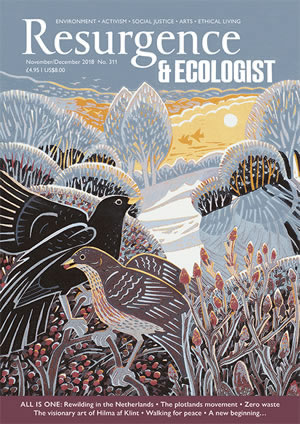It has been 10 years since the financial crash that nearly imploded globalised capitalism. Since then, inequality has been thrust into the forefront of political debate, from Richard Wilkinson and Kate Pickett’s seminal book The Spirit Level, to the Occupy movement taking aim at the 1%, to Thomas Piketty’s brick of a book Capital in the Twenty-first Century. A decade later, Danny Dorling – a true cornerstone of the equality debate – has compiled a collection of articles that suggest we may be coming out the other side of a decades-long trend. We may have hit peak inequality.
Dorling has been tireless in exposing the injustices of inequality, and he’s on typically fine form here. Even at this point in his bulging bibliography, his granular analysis into the state of austerity Britain retains the capacity to shock. An illustrative example is his deep dive into the fact that in 2013 life expectancy fell among the elderly for the first time since the 1930s. This was coincident with cuts to vital social services, and available evidence seems to confirm the link. But the government blamed it on cold winters (even in mild weather) and demographic changes (demonstrably untrue). As ever, Dorling brilliantly exposes the brutality of inequality, and those who perpetuate it.
While never shying away from the stark disparity between the 1% and the 99%, he does not shy away from the fact that inequality damages the whole of society, not just those less wealthy. The wealthier you get, the more inequality widens. Dorling shows us a UK in which life comes with its own set of pressures for those just about in the 1%, with incomes and lifestyles varying wildly among their immediate peers. And for the super-rich, life can descend into little more than a Scythian battle to secure wealth and personal safety, unable to trust even their closest family. In a society of vast inequality, the higher you are up the ladder, the further and harder you have to fall. Compared to the sharp end of austerity cuts, these are undoubtedly nice problems to have. But they are not necessarily lives to envy.
Happily, Dorling remains an optimist, and the final chapters of the book look ahead a hundred years to a country in which we are far more equal. “The extreme inequality, the continuous crisis, and the awful austerity that we experience today will soon be history,” he promises. Such projections of the future are both refreshing to read and important to imagine. (How else could we create them?) However, they carry a charge of slightly teleological thought. It is easy enough to accept the claim that inequality cannot keep accelerating forever – all bubbles burst, after all. But some of these visions of the future have the whiff of a fixed end-point. Should such futures arrive, would inequality not rise again from a low ebb, just as inevitably as it must fall from a high peak?
Dorling’s predictions also tend to rest on an assumption that socio-economic changes will play out within a relatively stable environment. There’s not much provision in them for the possibility of something unprecedentedly bad happening in the next few decades. To his credit, Dorling is not the sort of author to throw his hands in the air and say, “It’s probably game over by 2050.” But, in a collection that makes such creative use of cartography, we might expect that forecasts could be informed by a map of the world based on what we already know about sea-level rise, for instance. For better or worse, ecology and climate change will play a critical role in global inequality over the next century, and more focus on this would have been welcome.
All that aside, the 10-year anniversary of the crash certainly provides a good vantage point from which to observe the truth of one of Dorling’s underlying theses: sweeping change can come very suddenly, and, almost paradoxically, can be surprisingly hard to notice. Today, the unpredictability of contemporary politics has become a cliché. Volatility is the new normal. But think back to when Gordon Brown bailed out the banks. The idea that a seemingly lifelong backbencher socialist would lead Labour or that a cartoon Manhattan socialite would be sitting in the White House weren’t just unlikely prospects. They were unthinkable.
Dorling gives an encouraging take on what the future may hold, but we must be honest with ourselves that a range of dystopias could also be on the horizon. At his gloomiest, Dorling concedes this too. (A few years ago, he and I had a conversation in which he imagined the North Atlantic Oscillation ending, the Gulf Stream stopping, and the UK having to be evacuated.) The speed and magnitude of change over the next century will almost certainly have no parallel in planetary history. From the transformation of our natural world, to the expanding frontiers of technology, the menu of possible futures feels impossibly vast, and nothing is guaranteed. If we have indeed hit peak inequality, there are still a myriad ways of coming back down. It could be a managed descent. Or it could be another crash.






